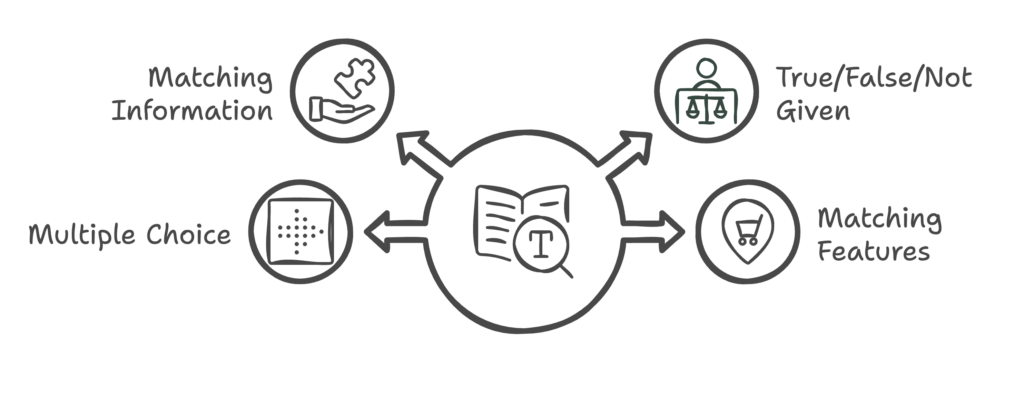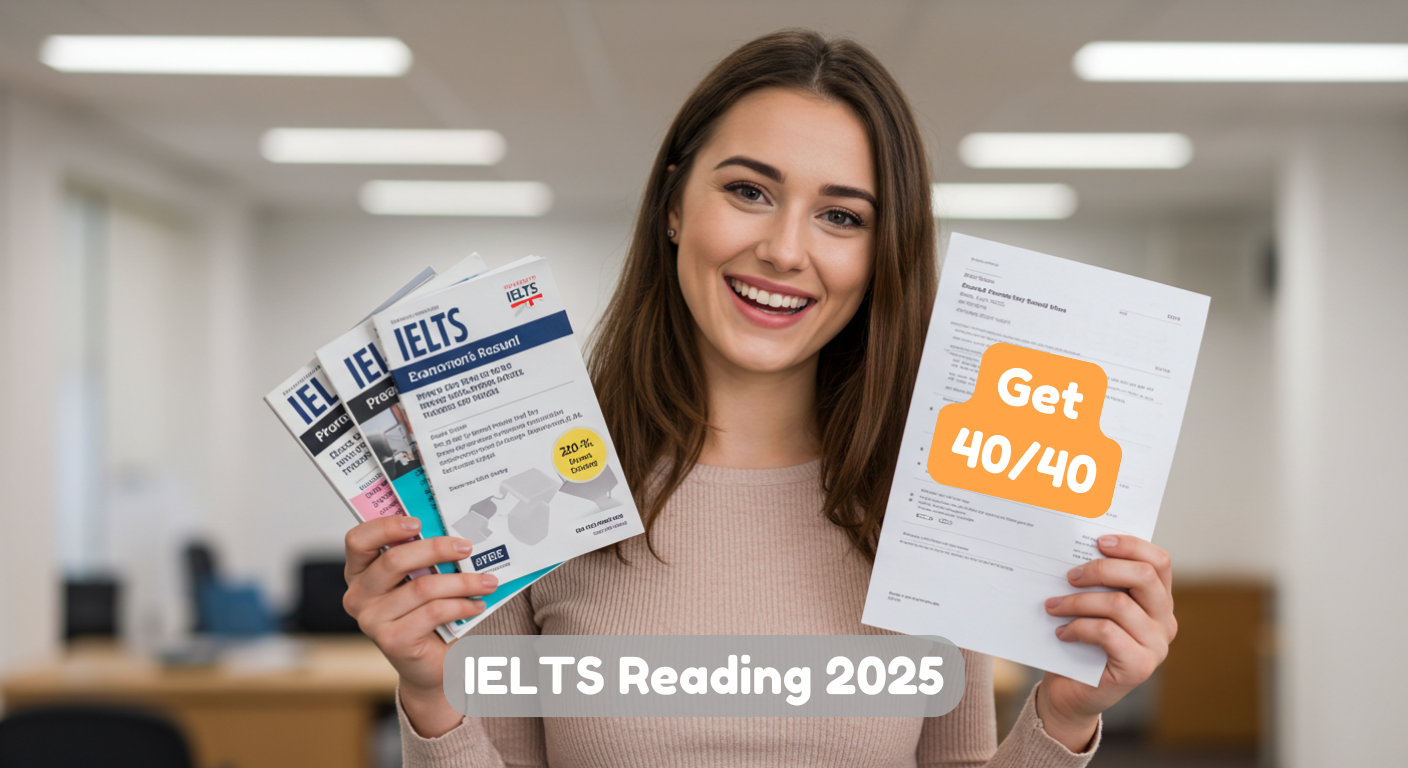Achieving a Band 8 or 9 in IELTS Reading is entirely possible with the right strategies and tools. Thousands of students have reached their goals by leveraging expert insights, techniques, and advanced preparation platforms like Langujet. In this guide, we’ll address two key challenges: time management and accuracy, while also exploring how Langujet’s FullMock exams and personalized feedback can enhance your preparation.
IELTS Reading Test Overview
Structure & Scoring:
- Duration: 60 minutes
- Questions: 40, divided into three sections
- Test Types: Academic (long, complex texts) and General Training (shorter, practical texts).
In the Academic test, you’ll read about topics like archaeology, biology, or genetics. The content in the General Training test is more practical, such as choosing appliances or home repairs.
Scoring Differences:
To achieve the same band score, General Training requires more correct answers:
- Band 7: 30 (Academic) vs. 34 (General Training).
- Band 8: 35 (Academic) vs. 38 (General Training).
Despite these differences, the strategies in this guide apply to both test types.
How to Save Time in IELTS Reading
1. The 15-20-25 Rule:
Instead of spending 20 minutes per section, allocate your time based on difficulty:
- Section 1 (Easiest): 15 minutes.
- Section 2 (Moderate): 20 minutes.
- Section 3 (Hardest): 25 minutes.
For advanced students aiming for Band 8 or 9, aim for:
- 12 minutes on Section 1.
- 18 minutes on Section 2.
- 23 minutes on Section 3, leaving 7 minutes for review.
Prioritize Answerable Questions:
- If you’re stuck, skip the question and return to it later. Complete all questions within your initial pass, then revisit skipped ones.
2. Answering Strategies:
To Read or Not to Read (the Passage First)
Two Approaches:
- Read the Passage First: Best for advanced readers who can skim efficiently in 3-4 minutes. Provides context for answering questions.
- Go Straight to Questions: Ideal for those who struggle with reading speed or feel overwhelmed. Locate keywords in the questions and scan the passage for answers.
Langujet Pro Tip:
Practice both strategies using Langujet’s FullMock exams to identify which works best for you. Receive detailed timing analysis and suggestions tailored to your strengths.
Focus on Highlighted Areas:
Not every sentence or paragraph contains answers. To save time, scan the passage for keywords like names, dates, and technical terms.
How to Answer More Questions Correctly
Which Questions Follow Passage Order?
- Follow Order: True/False/Not Given, Yes/No/Not Given, Multiple Choice, Sentence Completion.
- Don’t Follow Order: Matching Headings, Matching Information, Matching Features.
For questions in order, locate the first answer and proceed sequentially. For non-ordered questions, understand each paragraph’s main idea before matching.
Common IELTS Reading Question Types

1. Matching Information:
- Task: Identify the section containing specific information.
- Tip: Highlight keywords in the statements and look for paraphrased meanings rather than exact words.
2. True/False/Not Given | Yes/No/Not Given:
- True/Yes: The statement matches the text.
- False/No: The statement contradicts the text.
- Not Given: The text doesn’t address the statement.
Tip: Don’t overthink minor differences; focus on the overall meaning.
3. Multiple Choice:
- One Correct Answer: Carefully compare each option to the text.
- Two Correct Answers: Cross-check all options and look for subtle paraphrasing.
4. Matching Features:
- Task: Match statements to options (e.g., researchers, professions, hobbies).
- Tip: Scan for the options first, then carefully match the details.
Why Choose Langujet for IELTS Reading Preparation?
Langujet offers cutting-edge tools to help you master IELTS Reading with confidence:
1. FullMock Exams:
- Experience the latest IELTS Reading questions in a simulated test environment.
- Get familiar with the exam format and time constraints.
2. Real-Time Feedback:
- Receive AI-driven insights on your performance.
- Understand your mistakes with detailed explanations.
3. Personalized Learning Paths:
- Focus on improving specific weaknesses.
- Access targeted practice sessions based on your progress.
4. Comprehensive Question Coverage:
- Practice every question type, from True/False/Not Given to Matching Headings.
- Learn effective strategies for each task.
5. Vocabulary and Grammar Support:
- Expand your academic vocabulary for complex passages.
- Improve your grammar to avoid mistakes in tasks like sentence completion.
